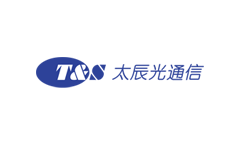How Are Fiber Optic Reflectors Applied to PON Network Link Monitoring?

In the PON (Passive optical network, passive optical network) network, especially the complex point-to-multipoint PON ODN (Optical distribution network, optical distribution network) topology environment, the rapid monitoring and diagnosis of optical fiber faults has become challenging work.
Although optical time domain reflectometer (OTDR) tools are widely used at present, OTDR detection is sometimes not particularly sensitive to the attenuation of optical signals at the ends of some ODN branch fibers or ONU fibers.
Installing a low-cost wavelength-selective optical fiber reflector on the ONU side is often used at present, through which accurate detection of the end-to-end attenuation of the optical link can be achieved.
1. The working principle of fiber optic reflectors
It mainly uses the fiber grating to reflect the test light pulse sent by the OTDR with a reflectivity of nearly 100%, while the working wavelength of the normal passive optical network (PON) system passes through with a small attenuation because it does not satisfy the Bragg condition of fiber grating.
The main function of this is that, by detecting the existence of the reflected OTDR test signal and the intensity of the optical signal, the return loss value of the reflection event at the end of each ONU branch can be accurately calculated.
Thus, it is judged whether the optical link from the OLT side to the ONU side is normal. This enables real-time monitoring of fault points and fast and accurate diagnosis.
By flexibly deploying the position of the reflector and identifying different ODN sections, the detection and location of the ODN fault point and the cause analysis can be quickly realized, which reduces the fault processing time and improves the test efficiency and line maintenance quality.
2. The role of fiber optic reflectors in different levels of scenes
In the first-level splitting scenario, if the return loss of the reflector of a certain home fiber branch increases significantly compared with the return loss value of the health file, it indicates that the optical fiber of this branch is There is a problem with the link; if all of the fiber branches with fiber reflectors have significant return loss increase at the same time, it is an indication that the trunk fiber is faulty.
In the secondary optical splitting scenario, the difference in return loss can also be compared to accurately locate whether the attenuation fault has occurred in the distribution fiber segment or the home fiber segment.
Whether it is a first-level or second-level splitting scenario, since the reflection peak will drop sharply at the end of the OTDR test curve, the return loss value of the longest branch link in the ODN network may not be accurately measured, and it is necessary to measure the reflector.
The
optical fiber reflector can be conveniently placed in series at the
user end. It has the characteristics of long life, stability, reliability,
and easy connection of the adapter structure. It is also one of the
reasons why the optical fiber reflector is an ideal optical end choice
for FTTx network link monitoring.
As a fiber optical accessories supplier, T&S Communications today takes a leading role in OEM and ODM service for optical fiber termination solutions. Based on T&S Communications’s excellent comprehensive capabilities, T&S Communications is dedicated to bringing fiber optical components with superior performance to next-generation communications in a green, pragmatic, and cost-effective manner.
- +1 Like
- Add to Favorites
Recommend
- OpDAT MV Highly Flexible Distributor Housing from METZ CONNECT is Designed for Fiber Optic and Copper Applications
- Fiber Optic Connectors Glass vs. Copper
- Knowledge about Fiber Optic Enclosures
- The Ultimate Guide to Fiber Optic Transceiver Modules
- Types of Fiber Optic Attenuators
- Firecomms Fiber Optics for Consumer Network Applications
- Cleaning Fiber Optic Adapters is a Mandatory for Jumper Installers
- What Are the Components of Internet of Things?
This document is provided by Sekorm Platform for VIP exclusive service. The copyright is owned by Sekorm. Without authorization, any medias, websites or individual are not allowed to reprint. When authorizing the reprint, the link of www.sekorm.com must be indicated.





























































































































































































































































































































































































































































































































































































































































































































































































































































































